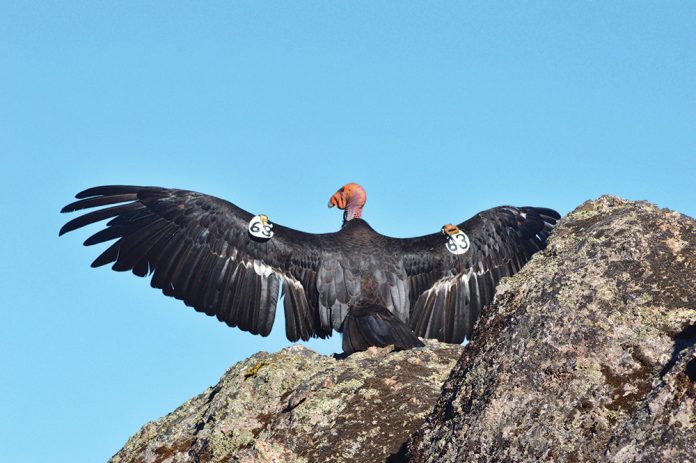As if poisoning from agricultural pesticides and lead from hunters’ shotgun shells weren’t enough, now the tiny population of California condors in Pinnacles National Park has to worry about drones.
Yes, drones.
Hikers had notified park rangers late last month that they saw a man “chasing condors with a drone,” apparently trying to get photos of the endangered species.
The amateur photographer apparently was taking advantage of drastically reduced ranger patrols at the park during the 35-day federal government shutdown. Because of the delay in the reporting and reduced staffing, rangers at Pinnacles Park were unable to find the drone operator, said a park spokesperson.
“Drones are illegal in the park,” he said, adding the ban holds for all national parks.
The rugged trails were still being cleared of debris this week, as rangers and maintenance crews worked to restore access routes that spider through the park’s spectacular scenery.
National Park Service biologists also returned to work, monitoring and tracking the endangered bird. California condors, with an estimated Central Coast population now approaching 100, had dwindled to 20 or so in the late 1980s, perilously close to extinction.
The big raptors with the 10-foot wingspans apparently have grown fond of the peaks at Pinnacles, where biologists say at least two nesting pairs make their home. Not much is known about the condors, but nearly all are tagged, numbered and equipped with their own GPS devices and radio transmitters—not for their own navigational purposes, but for the biologists whose laptops follow the birds’ movements. Condors in captivity have been known to live 50 years, but not much is known about their life spans in the wild.
Condors are visiting the park this time of year as nesting season approaches, which makes it prime time for condor watching, said park biologists.
A lead biologist estimated there are likely just six active condor nests in Central California. She reported this week sighting the first active condor nest within Pinnacles Park boundaries in several years. The soaring, reclusive birds hatch just a single egg every two years, so sighting any active nest is good news in the campaign to save the species.
The last successful nest, hatching a surviving bird, in the park boundaries was spotted four years ago. That nest, in the park’s centennial year, was the first successful nest in 100 years, according to the biologist.
Lead poisoning from birdshot shotgun shells—now banned in California—is still the biggest threat to condors, she said.
The other endangered animal in the park is the Townsend big-eared bat, which lives in the unique caves in the Pinnacles. For more information, visit https://www.nps.gov/pinn/learn/nature/condors.htm.










